Generalities on Wind Power Plants
Wind power has always given the necessary propulsive force to sailing ships and has been also used to run windmills. Then, this type of energy has fallen into disuse due to the spreading of electric power and thanks to the availability of low cost machines supplied by fossil fuel.
However, the recent attention paid to climate changes, the demand to increase the amount of green energy and fear of a decrease of oil fuel in the future have promoted a renewed interest in the production of electrical energy from renewable sources and also from the wind power. This type of energy, with respect to other renewable energies, requires lower investments and uses a natural energy source usually available everywhere and particularly usable in the temperate zones, that is where most of the industrialized countries are.
Physics and Nature of Wind
 The Earth continuously releases into the atmosphere the heat received by the sun, but unevenly. In the areas where less heat is released (cool air zones) the pressure of atmospheric gases increases, whereas where more heat is released, air warms up and gas pressure decreases. As a consequence, a macro-circulation due to the convective motions is created: air masses get warm, reduce their density and rise, thus drawing cooler air flowing over the earth surface.
The Earth continuously releases into the atmosphere the heat received by the sun, but unevenly. In the areas where less heat is released (cool air zones) the pressure of atmospheric gases increases, whereas where more heat is released, air warms up and gas pressure decreases. As a consequence, a macro-circulation due to the convective motions is created: air masses get warm, reduce their density and rise, thus drawing cooler air flowing over the earth surface.
This motion of warm and cool air masses generates high pressure and low pressure areas permanently present in the atmosphere and also influenced by the rotation of the earth.
Since the atmosphere tends to constantly re-establish the pressure balance, the air moves from the areas where the pressure is higher towards those where it is lower; therefore, wind is the movement of an air mass, more or less quick, between zones at different pressure. The greater the pressure difference, the quicker the air flow and consequently the stronger the wind.
In reality, the wind does not blow in the direction joining the centre of the high pressure with that of the low pressure, but in the northern hemisphere it veers to the right, circulating around the high pressure centers with clockwise rotation and around the low pressure ones in the opposite direction.
In the practice, who keeps his back to the wind has on his left the low pressure area “B” and on his right the high pressure area “A” . In the southern hemisphere the opposite occurs.
On a large scale, at different latitudes, a circulation of air masses can be noticed, which is cyclically influenced by the seasons. On a smaller scale, there is a different heating between the dry land and the water masses, with the consequent formation of the daily sea and earth breezes.
The profile and unevenness of the surface of the dry land or of the sea deeply affect the wind and its local characteristics; in fact the wind blows with higher intensity on large and flat surfaces, such as the sea: this represents the main element of interest for wind plants on- and off shore.
Moreover, the wind gets stronger on the top of the rises or in the valleys oriented parallel to the direction of the dominant wind, whereas it slows down on uneven surfaces, such as towns or forests, and its speed with respect to the height above ground is influenced by the conditions of atmospheric stability.
Wind as Energy Source
In order to exploit wind energy, it is very important to take into account the strong speed variations between different places: sites separated by few kilometers may be subject to very different wind conditions and have different implication for the installation purposes of wind turbines. The strength of the wind changes on a daily, hour or minute scale, according to the weather conditions.
Moreover, the direction and intensity of the wind fluctuate rapidly around the average value: it is the turbulence, which represents an important characteristic of wind since it causes fluctuations of the strength exerted on the blades of the turbines, thus increasing wear and tear and reducing their mean life. On complex terrain, the turbulence level may vary between 15% and 20%, whereas in open sea this value can be comprised in the range from 10% to 14%.
Variability and uncertainty of winds represent the main disadvantages of the electrical energy derived from the wind source. In fact, as far as the amount of power produced by the wind plant is small in comparison with the “size” of the grid to which it is connected, the variability of energy production from wind source does not destabilize the grid itself and can be considered as a change in the demand for conventional generators.

In some countries large-size wind plants are being considered, prevailingly offshore groups of turbines. Such wind farms shall have a power of hundreds of MW, equivalent to that of conventional plants, and therefore shall be able to foresee their energy production 24 hours in advance; this since the electrical grid manager must be able to know in advance the predictable offer of the various producers with respect to the consumers’ demand.
When taking into consideration a site for the installation of a wind turbine, an assessment of the real size of the wind resource is fundamental. Therefore an anemometric tower is usually installed on site for different months in order to monitor the wind speed and direction and the turbulence levels at different heights. The recorded data allow an evaluation of both the prospective energy production as well as the economic feasibility of the project.
The environmental impact has always been a big deterrent to the installation of wind power plants. In fact, in the most cases, the windiest places are the peaks and the slopes of the mountains relieves, where the wind installations result to be visible also from a great distance, with an impact on the landscape not always tolerable. It is possible to reduce the visual impact due to the presence of the turbines by adopting constructional solutions such as the use of neutral colors to help integration into the landscape.
Then, since the ground actually occupied by wind turbines is a minimum part of the wind farm area because the remaining part is necessary only for requirements of distance between the turbines to avoid aerodynamic interference, it is possible to continue using the area also for other purposes, such as agriculture or sheep farming.
Also the noise of the wind turbines has to be considered: such noise is caused by the electromechanical components and above all by the aerodynamic phenomena due to the blade rotation and depending on the characteristics of the blades and on their peripheral speed.
The problem of the noise may become negligible when considering two factors: the first one is that the noise perceived near to the wind turbines is sometimes attributed solely to wind generators, but, in reality, in windy areas and hundreds of meters from the generators, the background noise caused by the wind can be compared to that of the turbines; the second factor is that at a short distance from the wind turbines, the noise perceived has an intensity near to that of common daily situations and therefore also the personnel working in the area of the wind power station would be subject to acceptable acoustic disturbances. However, at 400-500m distance from the turbine, the sound effects are practically negligible.
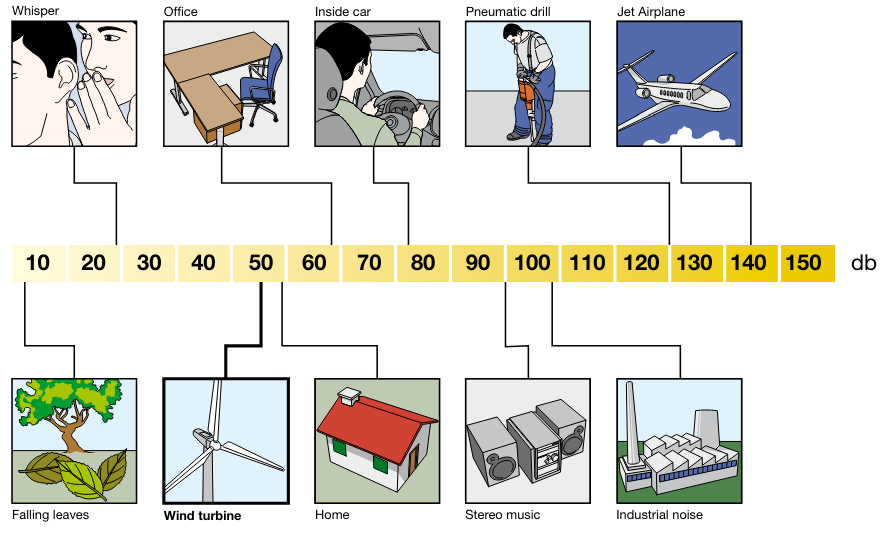
Operation Principle of Wind Turbines
Wind turbines or aerogenerators transform the kinetic energy of the wind into electrical energy with no use of fuel and passing through the phase of conversion into mechanical rotation energy carried out by the blades. Turbines can be divided into “lift” machines and “drag” machines according to which force is generated by the wind and exploited as “motive force”.
To understand the operation principle of a wind turbine, reference is to be made to the most widespread turbines, that is the “lift” ones. In the “lift” turbines, with respect to the “drag” type, the wind flows on both blade surfaces, which have different profiles, thus creating at the upper surface a depression area with respect to the pressure on the lower surface. This pressure difference creates on the surface of the wind blade a force called aerodynamic lift, as it occurs for aircraft wings.

Lift force on the wings of an airplane can lift it from the ground and support it in flight, whereas in a wind turbine, since the blades are bound to the ground, it determines the rotation about the hub axis. At the same time a drag force is generated, which is opposed to the motion and is perpendicular to the lift force. In the turbines correctly designed, the ratio lift-drag is high in the field of normal operation.
An aerogenerator requires a minimum wind velocity (cutin speed) of 3-5 m/s and delivers the nameplate capacity at a wind velocity of 12-14 m/s. At high speeds, usually exceeding 25 m/s (cut-off speed) the turbine is blocked by the braking system for safety reasons. The block can be carried out by means of real mechanical brakes which slow down the rotor or, for variable pitch blades, “hiding” the blades from the wind, by putting them in the so-called “flag” position.
The main advantages of the wind plants can be summarized as:
However, the recent attention paid to climate changes, the demand to increase the amount of green energy and fear of a decrease of oil fuel in the future have promoted a renewed interest in the production of electrical energy from renewable sources and also from the wind power. This type of energy, with respect to other renewable energies, requires lower investments and uses a natural energy source usually available everywhere and particularly usable in the temperate zones, that is where most of the industrialized countries are.
Physics and Nature of Wind
 The Earth continuously releases into the atmosphere the heat received by the sun, but unevenly. In the areas where less heat is released (cool air zones) the pressure of atmospheric gases increases, whereas where more heat is released, air warms up and gas pressure decreases. As a consequence, a macro-circulation due to the convective motions is created: air masses get warm, reduce their density and rise, thus drawing cooler air flowing over the earth surface.
The Earth continuously releases into the atmosphere the heat received by the sun, but unevenly. In the areas where less heat is released (cool air zones) the pressure of atmospheric gases increases, whereas where more heat is released, air warms up and gas pressure decreases. As a consequence, a macro-circulation due to the convective motions is created: air masses get warm, reduce their density and rise, thus drawing cooler air flowing over the earth surface.This motion of warm and cool air masses generates high pressure and low pressure areas permanently present in the atmosphere and also influenced by the rotation of the earth.
In reality, the wind does not blow in the direction joining the centre of the high pressure with that of the low pressure, but in the northern hemisphere it veers to the right, circulating around the high pressure centers with clockwise rotation and around the low pressure ones in the opposite direction.
In the practice, who keeps his back to the wind has on his left the low pressure area “B” and on his right the high pressure area “A” . In the southern hemisphere the opposite occurs.
On a large scale, at different latitudes, a circulation of air masses can be noticed, which is cyclically influenced by the seasons. On a smaller scale, there is a different heating between the dry land and the water masses, with the consequent formation of the daily sea and earth breezes.
The profile and unevenness of the surface of the dry land or of the sea deeply affect the wind and its local characteristics; in fact the wind blows with higher intensity on large and flat surfaces, such as the sea: this represents the main element of interest for wind plants on- and off shore.
Moreover, the wind gets stronger on the top of the rises or in the valleys oriented parallel to the direction of the dominant wind, whereas it slows down on uneven surfaces, such as towns or forests, and its speed with respect to the height above ground is influenced by the conditions of atmospheric stability.
Wind as Energy Source
In order to exploit wind energy, it is very important to take into account the strong speed variations between different places: sites separated by few kilometers may be subject to very different wind conditions and have different implication for the installation purposes of wind turbines. The strength of the wind changes on a daily, hour or minute scale, according to the weather conditions.
Moreover, the direction and intensity of the wind fluctuate rapidly around the average value: it is the turbulence, which represents an important characteristic of wind since it causes fluctuations of the strength exerted on the blades of the turbines, thus increasing wear and tear and reducing their mean life. On complex terrain, the turbulence level may vary between 15% and 20%, whereas in open sea this value can be comprised in the range from 10% to 14%.
Variability and uncertainty of winds represent the main disadvantages of the electrical energy derived from the wind source. In fact, as far as the amount of power produced by the wind plant is small in comparison with the “size” of the grid to which it is connected, the variability of energy production from wind source does not destabilize the grid itself and can be considered as a change in the demand for conventional generators.

In some countries large-size wind plants are being considered, prevailingly offshore groups of turbines. Such wind farms shall have a power of hundreds of MW, equivalent to that of conventional plants, and therefore shall be able to foresee their energy production 24 hours in advance; this since the electrical grid manager must be able to know in advance the predictable offer of the various producers with respect to the consumers’ demand.
When taking into consideration a site for the installation of a wind turbine, an assessment of the real size of the wind resource is fundamental. Therefore an anemometric tower is usually installed on site for different months in order to monitor the wind speed and direction and the turbulence levels at different heights. The recorded data allow an evaluation of both the prospective energy production as well as the economic feasibility of the project.
The environmental impact has always been a big deterrent to the installation of wind power plants. In fact, in the most cases, the windiest places are the peaks and the slopes of the mountains relieves, where the wind installations result to be visible also from a great distance, with an impact on the landscape not always tolerable. It is possible to reduce the visual impact due to the presence of the turbines by adopting constructional solutions such as the use of neutral colors to help integration into the landscape.
Then, since the ground actually occupied by wind turbines is a minimum part of the wind farm area because the remaining part is necessary only for requirements of distance between the turbines to avoid aerodynamic interference, it is possible to continue using the area also for other purposes, such as agriculture or sheep farming.
Also the noise of the wind turbines has to be considered: such noise is caused by the electromechanical components and above all by the aerodynamic phenomena due to the blade rotation and depending on the characteristics of the blades and on their peripheral speed.
The problem of the noise may become negligible when considering two factors: the first one is that the noise perceived near to the wind turbines is sometimes attributed solely to wind generators, but, in reality, in windy areas and hundreds of meters from the generators, the background noise caused by the wind can be compared to that of the turbines; the second factor is that at a short distance from the wind turbines, the noise perceived has an intensity near to that of common daily situations and therefore also the personnel working in the area of the wind power station would be subject to acceptable acoustic disturbances. However, at 400-500m distance from the turbine, the sound effects are practically negligible.

Operation Principle of Wind Turbines
Wind turbines or aerogenerators transform the kinetic energy of the wind into electrical energy with no use of fuel and passing through the phase of conversion into mechanical rotation energy carried out by the blades. Turbines can be divided into “lift” machines and “drag” machines according to which force is generated by the wind and exploited as “motive force”.
To understand the operation principle of a wind turbine, reference is to be made to the most widespread turbines, that is the “lift” ones. In the “lift” turbines, with respect to the “drag” type, the wind flows on both blade surfaces, which have different profiles, thus creating at the upper surface a depression area with respect to the pressure on the lower surface. This pressure difference creates on the surface of the wind blade a force called aerodynamic lift, as it occurs for aircraft wings.

An aerogenerator requires a minimum wind velocity (cutin speed) of 3-5 m/s and delivers the nameplate capacity at a wind velocity of 12-14 m/s. At high speeds, usually exceeding 25 m/s (cut-off speed) the turbine is blocked by the braking system for safety reasons. The block can be carried out by means of real mechanical brakes which slow down the rotor or, for variable pitch blades, “hiding” the blades from the wind, by putting them in the so-called “flag” position.
The main advantages of the wind plants can be summarized as:
- distributed generation;
- effective conversion of the wind energy into electrical energy (59% theoretical efficiency);
- lack of emission of polluting substances;
- saving of fossil fuels;
- reduced service (there are no costs for the fuel supply) and maintenance costs;
- easy dismantlement of the wind turbines at end of life (20/25 years);
- the generation capability of the wind turbine ranges from few hundreds of Watts to some MWatts, thus meeting the requirements of both single dwellinghouses, as well as of industrial applications or of injection into the network (through wind power stations).
Post a Comment:
You may also like:

Featured Articles
What is Wind Energy?
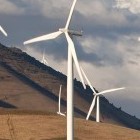 Wind is moving air. We can use the energy in wind to do work. Early Egyptians used the wind to sail ships on the Nile River. ...
Wind is moving air. We can use the energy in wind to do work. Early Egyptians used the wind to sail ships on the Nile River. ...
 Wind is moving air. We can use the energy in wind to do work. Early Egyptians used the wind to sail ships on the Nile River. ...
Wind is moving air. We can use the energy in wind to do work. Early Egyptians used the wind to sail ships on the Nile River. ...Wind Farm Siting, Installation and ...
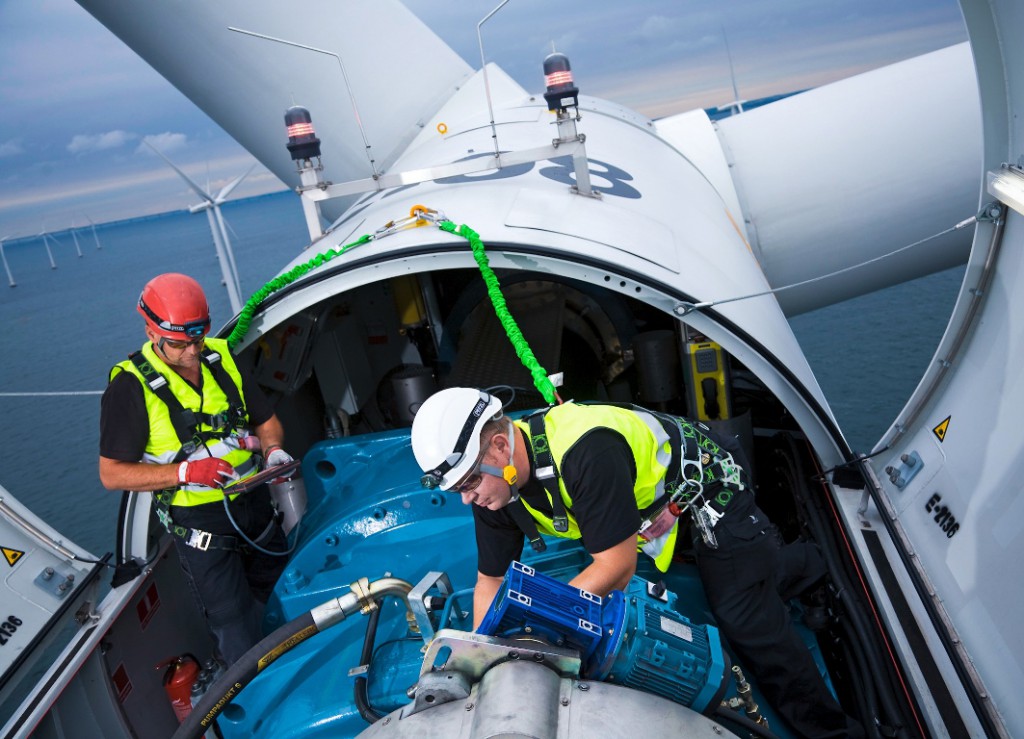 Before wind turbines can be installed, the most appropriate location or locations for them needs to be determined. The ...
Before wind turbines can be installed, the most appropriate location or locations for them needs to be determined. The ...
 Before wind turbines can be installed, the most appropriate location or locations for them needs to be determined. The ...
Before wind turbines can be installed, the most appropriate location or locations for them needs to be determined. The ...Basics of Wind Energy Production
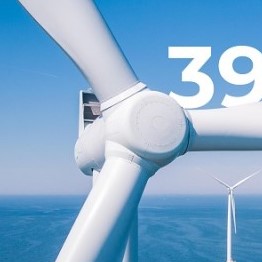 In the United States, most wind energy is commercially generated for delivery and sale on the grid. Wind projects vary in ...
In the United States, most wind energy is commercially generated for delivery and sale on the grid. Wind projects vary in ...
 In the United States, most wind energy is commercially generated for delivery and sale on the grid. Wind projects vary in ...
In the United States, most wind energy is commercially generated for delivery and sale on the grid. Wind projects vary in ...Basics of Wind Farms
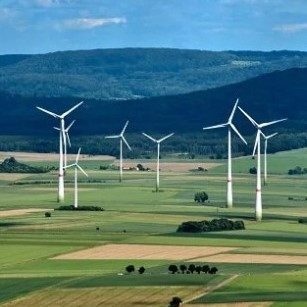 Throughout history, wind has been used to move grain mills or push the vessels that sailed the seas. However, it was not ...
Throughout history, wind has been used to move grain mills or push the vessels that sailed the seas. However, it was not ...
 Throughout history, wind has been used to move grain mills or push the vessels that sailed the seas. However, it was not ...
Throughout history, wind has been used to move grain mills or push the vessels that sailed the seas. However, it was not ...What is a Capacity Factor?
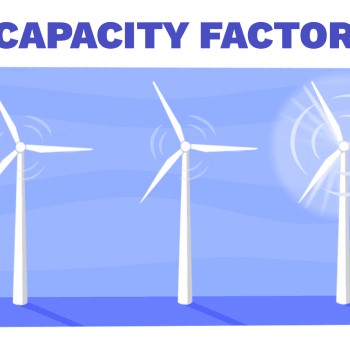 Wind turbines convert the kinetic energy in moving air into rotational energy, which in turn is converted to ...
Wind turbines convert the kinetic energy in moving air into rotational energy, which in turn is converted to ...
 Wind turbines convert the kinetic energy in moving air into rotational energy, which in turn is converted to ...
Wind turbines convert the kinetic energy in moving air into rotational energy, which in turn is converted to ...